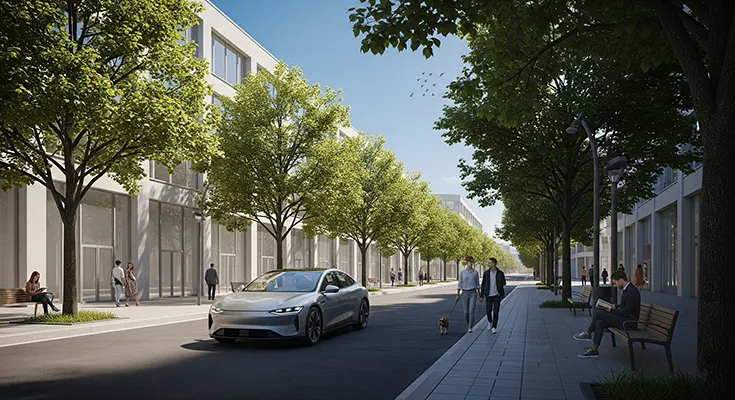Our cities, the hubs of human activity and economic growth, are also at the epicenter of two of the most pervasive forms of environmental degradation: air pollution and noise pollution. For decades, the constant hum of traffic and the smog-filled air have been accepted as an inevitable consequence of urban life. However, a new generation of vehicles—electric vehicles (EVs)—is poised to fundamentally change this reality, offering a transformative solution to make our cities cleaner, quieter, and healthier.
Reducing Air Pollution: The End of Tailpipe Emissions
The most direct and significant contribution of electric vehicles to urban air quality is the complete elimination of tailpipe emissions. Unlike gasoline- and diesel-powered cars that burn fossil fuels, EVs run on electricity and produce zero exhaust fumes at the point of use.
Traditional internal combustion engine (ICE) vehicles are a major source of a toxic mix of pollutants, including:
- Nitrogen Oxides (NOx): These gases are a primary ingredient in the formation of smog and acid rain, and are linked to a host of respiratory illnesses and cardiovascular diseases.
- Particulate Matter (PM2.5): These microscopic particles can penetrate deep into the lungs and bloodstream, causing serious health problems including asthma, bronchitis, and even cancer.
- Carbon Monoxide (CO): A poisonous gas that reduces oxygen delivery to the body’s organs and tissues.
- Unburned Hydrocarbons: These contribute to the formation of smog and can be carcinogenic.
By replacing millions of ICE vehicles with a fleet of EVs, cities can drastically reduce the concentration of these harmful pollutants on their streets. This shift has a direct and immediate impact on public health, particularly for those living and working in high-traffic urban centers. While the electricity used to charge EVs may have its own environmental footprint (depending on the source), the key benefit is that it moves the pollution away from densely populated urban areas to power plants, which are typically located in less populated industrial zones and are subject to stricter emissions controls.
Silencing the City: Combating Noise Pollution
Beyond the unseen threat of air pollution, the constant roar of traffic is a major source of stress, sleep disturbance, and other health issues for urban residents. This is where the quiet operation of EVs provides a tangible and immediate improvement in quality of life.
- The Absence of a Combustion Engine: A traditional car’s engine is a noisy machine, with the sounds of combustion, mechanical parts, and exhaust systems creating a persistent drone. An EV, by contrast, is powered by a quiet electric motor.
- Lower Decibel Levels: At low speeds (below 30 km/h or 20 mph), an EV is significantly quieter than an ICE vehicle. The only sounds it typically produces are from the tires on the road and a slight hum from the electric motor.
- Acoustic Vehicle Alerting Systems (AVAS): Recognizing that the near-silent operation of EVs could pose a safety risk to pedestrians and cyclists, many countries have implemented regulations requiring EVs to emit a low-level sound at low speeds. However, even with this added safety feature, the decibel level is much lower than that of a traditional car’s engine, preserving the benefit of a quieter urban soundscape.
The long-term health benefits of reducing noise pollution are significant, from improved mental health and reduced stress to better sleep quality and a lower risk of cardiovascular disease. The widespread adoption of EVs has the power to transform the sonic identity of our cities, making them more peaceful and serene places to live, work, and play.
The environmental benefits of electric vehicles are multifaceted. They are not only a crucial tool for combating climate change on a global scale but also a powerful solution for improving the quality of life in our urban environments. By eliminating tailpipe emissions and significantly reducing noise pollution, EVs are poised to create a future where city dwellers can breathe cleaner air, enjoy quieter streets, and lead healthier lives.

